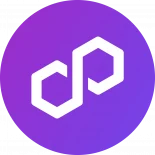What is Polygon?
Since it was launched in 2015, the Ethereum blockchain has become so popular that constant bottlenecks have constantly rendered the decentralized monetary network too slow and expensive for most use cases. In 2016, three India-based developers put their heads together to brainstorm a solution. After careful consideration, they decided not to compete with Ethereum. Instead, they created a scaling solution that runs parallel to the Ethereum blockchain. The result, called Matic, launched in 2017. Matic was later rebranded to Polygon in 2021.
Polygon allows developers to easily create sidechains that take advantage of Ethereum’s advanced security and utility while offering high-speed transaction processing and low transaction fees.
Today, the Polygon crypto network hosts more than 3,000 decentralized applications. And 2022 looks like it will be an exciting year for Polygon.
.
The Basics of Polygon
Polygon was developed by Polygon Technologies, a for-profit software company based in India. Ongoing development is coordinated by the non-profit Polygon Foundation.
In 2019, Polygon raised $5.5 million through token sales. Millions more have been raised since then. Though the platform is still seeing ongoing development, Polygon’s mainnet went live in June of 2020.
A lot has happened with Polygon crypto over the course of 2021, including the formation of several key partnerships and acquisitions. In mid-June, Grayscale, one of the largest holders of cryptocurrency in the world, announced plans to create a Polygon trust similar to its Bitcoin Trust (BTCG) and Etherum Trust (ETHE). Subsequently, near the end of September, private equity firm Osprey announced the launch of a Polygon trust for accredited investors in the United States.
Also in 2021, two of the largest crypto exchanges, Coinbase and Crypto.com added support for Polygon. Coinbase also announced that Polygon would be its go-to Ethereum scaling solution. Then in October, OpenSea, the largest NFT marketplace in the world, announced it would add support for Polygon.
In addition to the above-mentioned developments, because of its compatibility with Ethereum, scores of big-name blockchain projects have migrated from the Ethereum blockchain over to Polygon in the past five years.
Key Concepts of Polygon
The Polygon Network is an ecosystem of interconnected blockchains. In fact, it’s actually a series of blockchains that allows developers to easily create Ethereum-scaling applications, such as “rollups.” These rollups bundle transactions and data prior to porting them back to the Ethereum blockchain.
Polygon is especially well suited for the development of decentralized finance (defi) and ecommerce applications. Some of the more popular applications running on Polygon include Aave, 1Inch, Curve, SushiSwap, Fulcrum, Chainlink, The Graph, OpenSea, DAI, and many more.
These applications are made possible by smart contracts that are capable of automating financial operations. For example, smart contracts can collect or pay interest on loans and staking on a periodic basis. Smart contracts also enable the creation of NFTs (non-fungible tokens). An NFT is similar to an automobile title or property deed in that it holds information related to the ownership of an asset—in this case, a digital asset.
Polygon Architecture
As previously mentioned, the Polygon blockchain is essentially a copy of the Ethereum blockchain that runs parallel to the Ethereum monetary network using a scaling technology called Plasma.
Polygon’s architecture has three distinct layers.
- Staking and Plasma smart contracts on Ethereum
- Heimdall (Proof of Stake layer)
- Bor (Block producer layer)
Polygon transactions operate on what is called a commit-chain that combines transactions before sending the results back to the Ethereum chain.
Polygon Validators
The Polygon Network has 100 validators and up to 10 block-producing nodes. If the Ethereum network goes down, the validators can continue to process transactions.
A requirement for validators is that the amount of staked MATIC must be in the top 100. Moreover, there is a 21-day lockup period for staked MATIC.
Block producers on the Polygon blockchain periodically submit a snapshot of the Polygon chain to the Ethereum blockchain as a single transaction.
MATIC Tokenomics
- MATIC, Polygon’s native token, is an ERC-20 token that actually lives on the Ethereum blockchain. MATIC is mainly used for staking but is also used to pay the gas fees on the Polygon blockchain.At the time of writing, Polygon crypto trades in the mid $2.50 range. According to coinmarketcap.com, MATIC has a market capitalization of approximately $16 billion making it the 13th largest by market cap.A maximum MATIC supply of 10 billion tokens is available, approximately 7 billion of which are in circulation. The rest are earmarked for validator rewards which run out in 2025. When this happens, mining rewards will be limited to gas fees.
Polygon vs. Ethereum
Ethereum is the undisputed king of smart contract blockchains with a market cap second only to Bitcoin. However, Ethereum is slow and expensive to use. According to Coinbase, Ethereum can only handle 15 transactions per second, which is far too slow to be useful for most applications. This causes a bottleneck in processing.
The only way to speed up an Ethereum transaction is to incentivize miners by offering a higher gas fee. Because of this, gas fees on the Ethereum network are in the double digits and often exceed $100 per transaction.
By comparison, according to bitcoinsensus.com, the Polygon network is capable of processing 65,000 transactions per second. Polygon gas fees are generally less than a penny.
Take control of your retirement today.
Trust America’s #1 Bitcoin IRA and invest in your future with revolutionary digital assets. Open an account and self-trade 24/7.

How to Buy Polygon
Our Bitcoin IRA platform makes it easy to invest in MATIC and potentially grow your retirement savings. Follow these simple steps to get started investing in MATIC.
- Create an account on our platform. This entire process only takes a few minutes.
- Fund your account by transferring funds from your personal bank account or another IRA or retirement account.
Start trading. Once your account is funded, you’ll be able to access your dashboard and digital wallet to trade around the clock in real-time.
Polygon Crypto IRA and Taxes
Gains on cryptocurrency investments are taxed the same as any capital asset. First, you pay taxes on your income. Then, you pay capital gains taxes on profits from the sale of crypto.
However, by investing in MATIC via a Roth IRA through BitcoinIRA.com, investors can achieve substantial tax savings. While a Roth IRA doesn’t allow investors to deduct (part or all of) their contributions, as does a Traditional IRA, a Roth IRA saves investors from paying 20% or more in capital gains taxes when funds are withdrawn (after a minimum retirement age of 59-and-a-half).
Why Invest in Polygon with Bitcoin IRA
As mentioned above, Polygon crypto was developed to solve some of the challenges presented by the Ethereum blockchain. Polygon is far faster than Ethereum. Plus, transaction fees — known as gas fees — are also much lower on Polygon.
According to PolygonScan statistics, there are currently over 130 million unique addresses on the Polygon blockchain — an almost 1,000x increase since March 2021.
The total value locked (TVL) on all Ethereum layer 2 chains recently surpassed $6 billion, according to cucoin.com. And, according to Finextra.com, Polygon is far and away the largest layer 2 Ethereum scaling solution.
Polygon’s eventual goal is to reach 100 million daily active users. And, the Polygon Foundation is investing millions of dollars to make this happen.
How to Create a Bitcoin IRA with Polygon
Now that you’ve learned what Polygon is and have a better idea of the opportunity that this fast-growing layer 2 Ethereum scaling solution presents, perhaps, you may be ready to get started on investing in MATIC. By opening a retirement account with Bitcoin IRA, you’ll have access to the biggest and most secure cryptocurrency IRA platform available.
Click here to complete a BitCoinIRA application.
Polygon Price Predictions
The Polygon price is up a whopping 4,000% since the beginning of 2021. Although that ismighty impressive, it’s important to note that it’s lower than the gains seen by some other blockchains over the same period. This may be due to MATIC’s vesting schedule.
Every six months a massive amount of MATIC is unlocked and becomes available for selling. Historically, this event has resulted in a drop in the Polygon price. The most recent unlocking took place in 2021, which resulted in a significant gain for early investors, some of whom saw a more than 1,000x return on their investment. Moreover, the Foundation has also spent around a billion dollars on acquisitions.
The constant selling of the MATIC token by the Polygon Foundation and the Polygon team appears to have slowed the rise of the token’s price. However, much of the proceeds are being used to expand the network’s capabilities.
Some very exciting updates are coming for Polygon crypto that may increase the demand for MATIC in the coming year.
MATIC price is currently hovering around $2.50 according to Polygon price prediction at coinpriceforcast.com, before the end of 2022 Polygon price will be up over $8.00 and will pass $14 before 2025 — a more than 500% return on today’s price. Polygon price predictions suggest that MATIC could surpass $26 before the decade is over — a greater than 1,000% ROI. That’s a 10x in ten years’ time.



 3,500+ 5-Star Reviews
3,500+ 5-Star Reviews